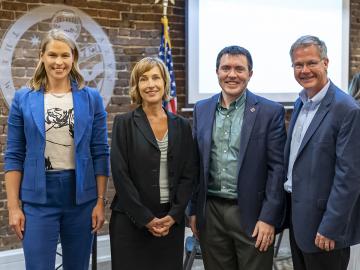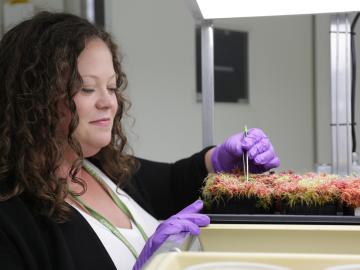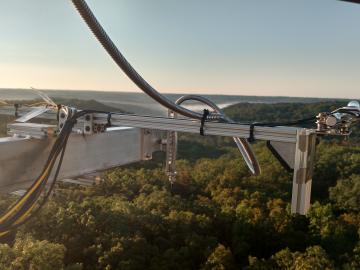
Filter News
Area of Research
News Type
News Topics
- 3-D Printing/Advanced Manufacturing (110)
- Advanced Reactors (26)
- Artificial Intelligence (114)
- Big Data (57)
- Bioenergy (94)
- Biology (106)
- Biomedical (60)
- Biotechnology (35)
- Buildings (49)
- Chemical Sciences (72)
- Clean Water (18)
- Composites (24)
- Computer Science (178)
- Coronavirus (36)
- Critical Materials (16)
- Cybersecurity (32)
- Education (5)
- Element Discovery (1)
- Emergency (3)
- Energy Storage (77)
- Environment (162)
- Exascale Computing (66)
- Fossil Energy (7)
- Frontier (62)
- Fusion (55)
- Grid (50)
- High-Performance Computing (117)
- Hydropower (6)
- Irradiation (1)
- Isotopes (55)
- ITER (6)
- Machine Learning (51)
- Materials (119)
- Materials Science (115)
- Mathematics (8)
- Mercury (9)
- Microelectronics (4)
- Microscopy (41)
- Molten Salt (5)
- Nanotechnology (48)
- National Security (80)
- Neutron Science (141)
- Nuclear Energy (98)
- Partnerships (67)
- Physics (60)
- Polymers (23)
- Quantum Computing (49)
- Quantum Science (81)
- Security (28)
- Simulation (54)
- Software (1)
- Space Exploration (16)
- Statistics (3)
- Summit (63)
- Transportation (62)
Media Contacts

ORNL researchers are deploying their broad expertise in climate data and modeling to create science-based mitigation strategies for cities stressed by climate change as part of two U.S. Department of Energy Urban Integrated Field Laboratory projects.

A crowd of investors and supporters turned out for last week’s Innovation Crossroads Showcase at the Knoxville Chamber as part of Innov865 Week. Sponsored by ORNL and the Tennessee Advanced Energy Business Council, the event celebrated deep-tech entrepreneurs and the Oak Ridge Corridor as a growing energy innovation hub for the nation.

ORNL has provided hydropower operators with new data to better prepare for extreme weather events and shifts in seasonal energy demands caused by climate change.

Two years after ORNL provided a model of nearly every building in America, commercial partners are using the tool for tasks ranging from designing energy-efficient buildings and cities to linking energy efficiency to real estate value and risk.

When Matt McCarthy saw an opportunity for a young career scientist to influence public policy, he eagerly raised his hand.

Science has taken Melanie Mayes from Tennessee to the tropics, studying some of the most important ecosystems in the world.

As the United States moves toward more sustainable and renewable sources of energy, hydropower is expected to play a pivotal role in integrating more intermittent renewables like wind and solar to the electricity grid

Microorganisms may provide hope that peatlands can withstand hotter temperatures in a changing climate.

Scientists develop environmental justice lens to identify neighborhoods vulnerable to climate change
A new capability to identify urban neighborhoods, down to the block and building level, that are most vulnerable to climate change could help ensure that mitigation and resilience programs reach the people who need them the most.

Technology developed at ORNL to monitor plant productivity and health at wide scales has been licensed to Logan, Utah-based instrumentation firm Campbell Scientific Inc.


